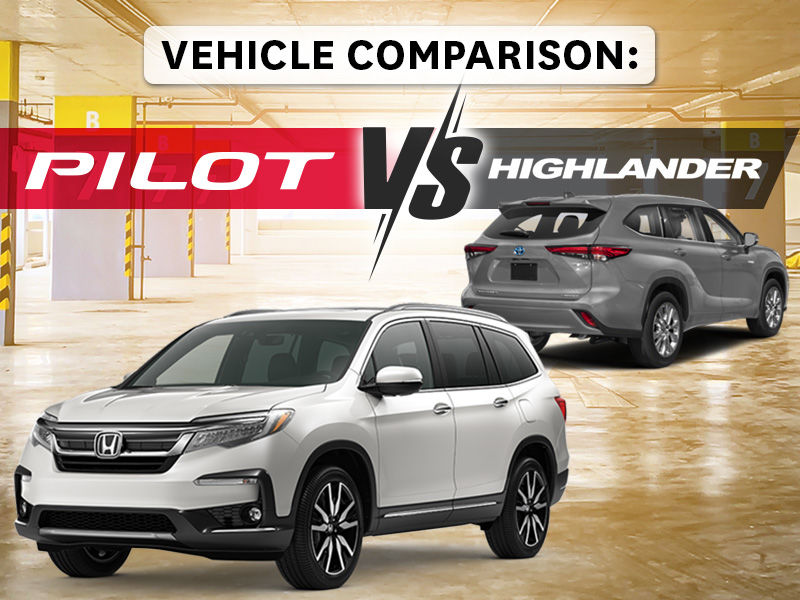2021 Honda Pilot vs. Toyota HighlanderAt Calgary Honda


|
|
||
| Each employs a naturally aspirated 3.5-litre V6; the Pilot’s produces 280 hp and 262 lb-ft of torque at 4,700 rpm, while the Highlander’s makes 295 hp and 263 lb-ft, also peaking at 4,700 rpm. In each case, the amount of power suits the vehicle type nicely. | ||
|
|
||
|
Pilot:
• 9-speed automatic transmission with Grade Logic Control
• Intelligent Variable Torque Management (i-VTM4™) AWD system
• Intelligent Traction Management System
• ECON mode button
• Towing Capacity of 1588 or available 2268
|
VS. |
Highlander:
• 8-speed automatic transmission
• 3.5 Litre, V6 Dual Variable Valve Timing with Intelligence (VVT-i)
|
|
|
||
|
The Pilot includes:
• Remote engine starter
• Position memory seats and mirrors
• Panoramic moonroof
• Heated leather steering wheel
• 60/40 split-folding seats
• One-touch second row seats
• Heated seats
• Proximity keyless entry and push button start
• Ventilated front seats
• 8-passenger seating
|
VS. |
The Highlander includes:
• Heated front seats
• 8-way power adjustable driver's seat
• 2nd row foldable 60/40 seats
• 4-way manual passenger seat
• Dual-zone automatic climate control
• Illuminated entry with fadeout
|
|
|
||
|
The Pilot includes technologies such as:
• Apple Carplay and Android Auto
• 8" Display
• Multi-angle rearview camera with dynamic guidelines
• Honda Satellite-Linked Navigation System
• Advanced rear entertainment system
• CabinTalk PA
• LaneWatch blind spot display
• Blind spot indicator on mirrors
• Rear cross-traffic monitor
• Wireless charging
• 11 speaker audio system
• Steering wheel-mounted paddle shifters
|
VS. |
The Highlander includes technologies such as:
• Apple Carplay and Android Auto
• 8" Display
• 6 speaker audio system
• Driver Easy Speak
• 4 USB charging ports
• SIRI eyes free
An important item to note is that the Highlander requires you to keep the In Tune App subscription in order to keep remote start until after the trial has expired. Another difference in the touchscreen display system is in the Highlander, you have to go into the display to adjust the climate zones.
|
|
|
||
|
Both the Pilot and the Highlander come with the standard safety features of vehicles released in 2021. These include Brake Assist, Collision mitigation systems, forward collision warning, lane assist, lane departure warning, front-to-front risk protection, and more. |
||
|
|
||
|
Despite its overall increases in dimensions from the previous generation, the Highlander still gets blown out of the water by the Pilot on interior space. While the Highlander’s overall length and height are similar at 5,015 mm and 1,730 mm respectively in the XSE, versus 4,991 mm and 1,794 mm in the Pilot, Honda works its magic by creating 57 litres more space behind the third row (453 L Highlander/510 L Pilot), 433 L more behind the second row (1,150 L/1,583 L), and 617 L more behind the first row (2,455 L/3,072 L). |
VS. |
The Pilot’s third row is easier to access thanks to the slightly taller rear door opening and the easy action on the second-row seats, which moves them out of the way with a single button that third-row passengers can also reach themselves for ease of exit. By contrast, the Highlander’s seats need to be moved with a lever on the side that those in the back can’t reach on their own. Neither third row has especially comfortable seats or amenities such as USB ports. |
|
|
||









